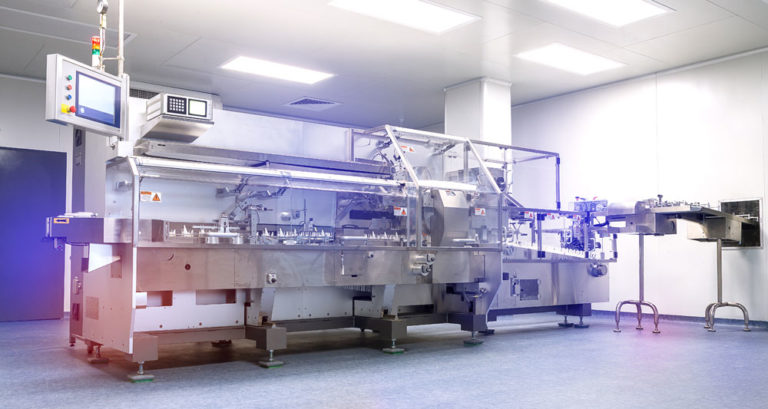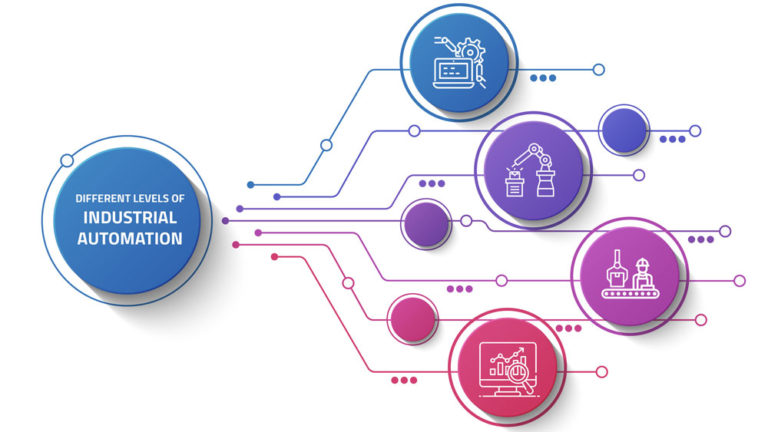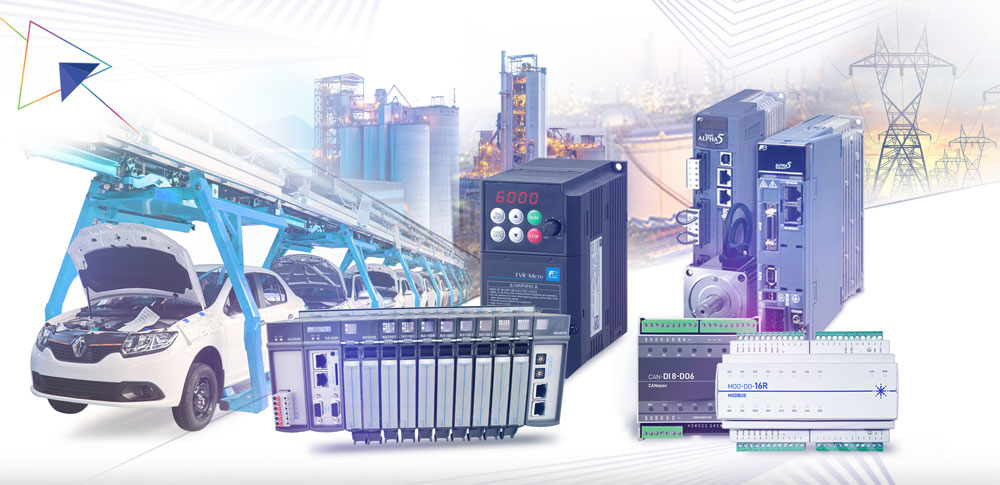
WHAT IS INDUSTRIAL PROCESS AUTOMATION?
Today, across the world and across industries, industrial process automation runs and controls the production process. One can hardly think of an industry or production line sans automation. As manufacturers face growing demands for high quality, consistency and competitive pricing, they turn increasingly towards new manufacturing techniques and the use of automation technologies.
Industrial process automation enables better product quality and production rate while reducing production costs.
WHAT IS INDUSTRIAL AUTOMATION?
Industrial process automation is the act of applying intelligent technology to industrial processes to replace manual, mundane, repetitive tasks with highly efficient and automated workflows. With industrial automation and control, enterprises can work faster and smarter while lowering operating costs and reducing wastage.
Without process automation, plant operators have to physically and manually monitor performance values and quality of output to determine the best settings to run the production equipment.
Industrial automation systems use sensors, automatic control devices, computer technology and software engineering to simply and manage these tasks. Data is collected through thousands of sensors at different locations throughout the facility; the information is stored and analyzed on a computer. Every process and machine can be monitored and controlled on a large screen in a control room.
The computer program uses measurements to show not only how the plant is working but to simulate different operating modes and find the optimal strategy for the plant. It can predict trends, helping to speed up the response time to changing conditions.
Industrial automation improves overall performance by increasing standardization, speed, and adherence to design specifications. It also reduces daily operating costs and the risk of human error.

WHY AUTOMATION IS REQUIRED
The need for automation is universally acknowledged. The application of automation in industries offers many undeniable advantages. The top ones are:
Reduces cost: Automation reduces manpower costs since most manual tasks are automated. AI and data analytics help to reduce production costs by providing insights and data to facilitate timely and informed decisions. Fewer errors and wastage mean lower operating costs. Moreover, automated preventive maintenance improves the life and performance of machines, enhancing the value of assets.
Enhances quality: The automation system helps increase and maintain consistent quality of output. The error rate is as low as 0.00001%. Monitoring, inspection and real-time data help check every stage of the manufacturing process to reduce the margin of errors.
Increases productivity: Automated lines consist of workstations connected by transfer lines; each workstation handles one part of the production process. Robotics can be used to mimic many human actions. By enabling continuous production 24x7x365, automation increases productivity.
Greater flexibility: Implementing a new task or adapting changes in a traditional production process can take hours and days of user training. With industrial automation, reprogramming a machine or robot is simple, fast and reliable.
Traceability: This is an important feature not only in the food and pharma industries but across industries. Automation helps trace and track the entire lifecycle of a product from raw material to the final location where it is shipped. Tracing facilitates mapping and root cause analysis for more effective control and development.
Monitoring equipment: Sensors, cameras, smart devices in the automation network observe and monitor the working condition of all the machines in the manufacturing unit. They help diagnose any issues and raise alarms for timely action.
Predictive maintenance: Industrial process automation continuously monitors production lines and production floors, tracking temperature, acoustics, time, frequency, oil pressure and other parameters. When the sensors detect any change, they immediately send an alert and technicians can take immediate action. Thus, potential problems can be prevented, repair/maintenance costs can be minimized.
Industrial safety: Industrial automation helps improve safety in the workplace. Industrial automation and robotics in the factory (especially in hazardous areas) reduce the risks of accidents. Workers need not go close to assembly lines, and any dangers such as spikes in temperature are immediately identified and flagged, so precautions can be taken to ensure the safety of all people on the shop floor.
Accurate Information: Automation enables the collection and analysis of reliable data. When accurate information is used in the production process, it ensures precise results. AI and ML solutions are scalable and self-learning so you get accurate results every time. The database provides an ongoing resource and searchable forum for better and faster decision-making.
DIFFERENT LEVELS OF INDUSTRIAL AUTOMATION

Industrial process automation systems can vary from simple to complex. They can be categorized into four types:
Field Level: This is the lowest level of automation which includes field devices such as sensors and actuators which are interfaced to a PLC. These devices capture real-time parameters like temperature, pressure, flow, etc. and transfer data of machines and processes to the next level for monitoring and analysis.
Control Level: This level consists of PLCs, CNC machines, etc. which receive the process parameters from various sensors. They then drive the actuators based on the program/control technique. Programmable Logic Controllers (PLCs) are the most widely used industrial controllers which deliver automatic control functions based on input from sensors.
Supervising and Production Control Level: This level consists of automatic devices and monitoring systems that facilitate the controlling and intervening functions like Human Machine Interface (HMI), supervising various parameters, setting production targets, historical archiving, setting machine start and shutdown, etc. Generally, either Distribution Control Systems (DCS) or Supervisory Control and Data Acquisition (SCADA) HMIs are used in this level.
Information or Enterprise Level: This is the top-level which manages the whole automation system. At this level, tasks include production planning, customer and market analysis, orders and sales, etc.
It is worthwhile pointing out that industrial communication networks play a big part in industrial automation systems. They are present at all levels to provide a continuous flow of information through networks such as RS485, CAN, DeviceNet, Foundation Field bus, Profibus, etc.
RELIABLE PARTNER FOR INDUSTRIAL PROCESS AUTOMATION
Messung is one of India’s leading industrial automation companies, offering all types of industrial automation solutions: general machine automation, process automation and servo & motion control automation. Messung’s automation and control systems have been enabling various industries in India for four decades.

Messung can provide a long list of factory automation examples and industrial automation case study pdf as part of their credentials. With its own indigenous innovations, and through tie-ups with global majors Altus, Sigmatek and Fuji Electric, Messung offers a world-class range of industrial automation products (such as PLCs, remote I/Os, SCADA applications, VFD drives, Servo drives, etc.) and factory automation tools.
Messung’s industrial automation engineers have the knowledge, experience and ‘can-do’ attitude to design and install industrial control systems that will empower your industry with the leading edge.
